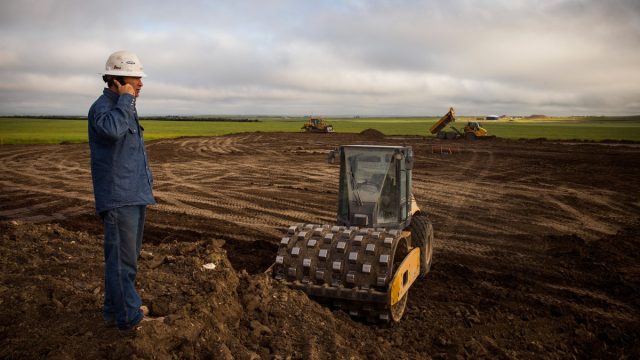Are Western North Dakota Tax Dollars Being Spent Appropriately?

North Dakota is having a debate over whether or not to hold a special legislative session to address needs in the western part of the state created by impacts from the oil boom. I’m not sure it’s a great idea (as I wrote about here) because a) it would happen shortly before a regular session b) it might diminish the west’s ability to get what they need during regular session and c) I’m not sure there’s enough scrutiny on how the billions appropriated during the last legislative session are being spent.
That last point is echoed in an editorial by the Bismarck Tribune today.
Serious infrastructure needs do exist in the state’s oil patch. To address those needs, the Legislature appropriated more than $2 billion for roads and bridges alone for the two-year budget cycle that began in 2013. About half that money has been spent. Additional funds were budgeted for education and law enforcement.
Positive changes were made in state housing policy to support affordable housing. Lawmakers were not inattentive.
Was it enough?
Many city and county officials will tell you no, and say they are falling behind.
Another question might be: How fast can you responsibly spend the funds already provided?
The Tribune goes on to point out that contractors operating in the west are already “maxed out,” and that throwing more money at the situation isn’t likely to move things along any faster. But there’s another issue here, having to do with the word “responsibly.”
This chart, from a presentation made by the North Dakota Department of Transportation to legislators, shows the cost differential between construction in western North Dakota and those operating in the east. As you can see, the cost differentials are enormous:
There are a lot of good explanations for why costs are higher in North Dakota, and particularly western North Dakota. They have to do with things like labor shortages and jam-packed infrastructure.
But should costs really be double or triple in western North Dakota compared to just a few hundred miles away?
Addressing western North Dakota’s real needs is important, but also important is the careful and responsible expenditure of the public’s dollars. And looking at these cost differentials, you have to wonder how responsible the expenditure of transportation funds in the west has been, and whether or not additional rushed appropriations would only exacerbate this problem.





